
A Toposa woman looks at a tank in Kapoeta, South Sudan. Photo by Steve Evans via Flickr (2011).
In 2017, when lay missioner Gabe Hurrish arrived in South Sudan, he was following in the footsteps of Susan Nagele, Liz Mach, Marj Humphrey and Marty Roers — all of whom served in the region at various times throughout the 1990s and early 2000s. Over the years, these missioners witnessed the struggle for independence in southern Sudan, a prolonged civil war, and the slow progress toward transcending a long history of violence.
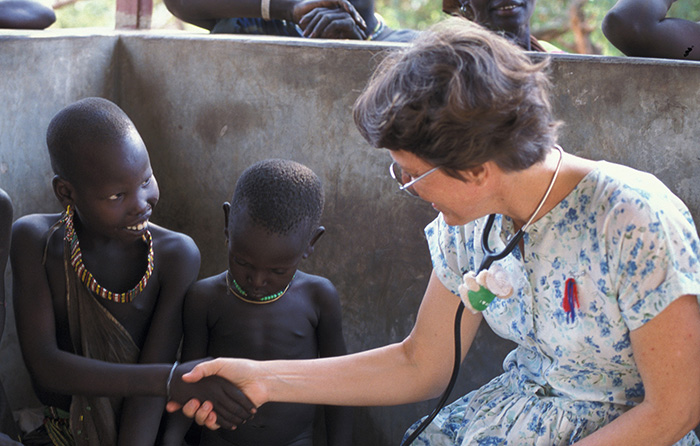
Susan Nagele at the Nyangachor clinic in 2002. Photo by Sean Sprague
Dr. Susan Nagele, who recently retired after 35 years as a lay missioner, explains that the war was rooted in both political and ethnic conflicts, with “the Khartoum government in the north — mostly people of Arab origin — against Black Africans” in the south. To complicate matters, Susan reports that the south itself was rife with centuries-old intertribal conflict, especially between the majority Dinka tribe and the other ethnic groups in the region.
Remembering what it was like to work in the midst of constant conflict, Susan recalls one night she was assisting a surgeon, working by the light of a solar lamp, when their progress was interrupted by shelling. Susan and the surgeon crouched low to avoid being hit. The man they were working on had been hit by shrapnel from a previous round of shelling, which had ripped open his abdomen. That memory has become a lasting symbol for her of the way conflict complicates and impedes efforts to meet people’s everyday needs.
Marj Humphrey, who arrived in 1994, says, “Southern Sudan was the most profound experience I have had in mission. An image that remains forever embedded in my heart is that of lying face down in a fox hole, absolutely terrified, with bombs dropping around us. Beside me, in that narrow little ditch, was a 12-year-old boy, also face down, so close I could feel him trembling, while he prayed a quiet mantra over and over again ‘Rabbuna fi, Rabbuna fi, Rabbuna fi’ (God is here, God is here, God is here). What are the wounds, the scars of people who live this reality for years, for decades?”

Women in a typical Toposa village in southeastern South Sudan. Photo by Steve Evans via Flickr.
These sentiments are echoed by Marty Roers, who served in southern Sudan from 1999 until 2002. The suffering he witnessed there permanently changed his perspective, opening his eyes to the “unjust realities of our world.”
While the war for independence ended with the formation of South Sudan in 2011, the problem of ethnic conflict has continued. Susan contrasts South Sudan with Tanzania, where a common language, Swahili, was chosen to help people forge a national identity, and where people were encouraged to think of themselves as Tanzanians first and members of their tribes second. As a result, Tanzania, home to more than 120 different tribal groups, is one of the most peaceful nations in East Africa.
Susan points out that while South Sudan lacked the national, political leadership needed to mirror Tanzania’s achievements, it did have prophetic leadership in figures like Bishop Paride Taban, the first bishop of the southern Sudanese Diocese of Torit (1983-2004).
During the war, Bishop Taban continually called for intertribal understanding and mutual acceptance among Christians and Muslims. Susan remembers that “Bishop Taban asked people to lay aside their differences and try to clarify their common goals.”

In Kuron Peace Village, Bishop Paride Taban is building bridges between people — both literally and figuratively. Photo by PAX for Peace-NL.
Now a bishop emeritus, Taban has continued these efforts, and in 2005 he founded Kuron Peace Village in remote southeastern South Sudan. Describing the village, he writes: “I have been dreaming of a community where people from different ethnicities and different religious backgrounds can live side by side.” More specifically, the village has three main goals: to produce enough food to alleviate hunger; to provide access to education for boys, girls and even adults; and to promote peaceful co-existence among tribes in the area.
After serving for two and a half years with Solidarity with South Sudan, Gabe began a new ministry at Kuron Peace Village last October. He reports that the intertribal rivalries the village tries to address include cattle rustling and, more tragically, abducting the children of neighboring tribes.
“Children from maybe 8 years old and up are often out in the fields herding goats or keeping the birds away from the crops,” Gabe explains. “Groups from another tribe will abduct and sell the children in exchange for cattle, the source of wealth and prestige for South Sudanese. Most of the time, the children are gone forever and the family will never see them again.”
Both cattle raiding and the abducting of children lead to violent reprisals, which Gabe says are made more possible by “the many weapons available after 50 years of fighting. I’ve seen children as young as 10 years old carrying AK-47s. Given that there are no jobs and there’s nothing to do, people pick up a gun thinking now people will listen to them. Now they are powerful. They are somebody.”
One of Kuron Village’s initiatives is to send peace teams out to rural villages where they mediate between the Toposa, Jie, Murle, Nuer and other ethnic groups and create a safe space for everyone to share their views.
Gabe believes, “When people stop talking, that’s when they start fighting. Things improve when people look at the other person as a human being. That’s what we are trying to do here, to get each of the tribes to see the other one as human beings and realize they too have a family and children they care about.”
During their visits, the peace teams include women in the conversation and advocate for the education of women and girls. Gabe says that this is a new idea for many of the men who “think if the girls are educated, they will leave their traditional role in the household.”
Liz Mach, Maryknoll Lay Missioners’ longest-serving missioner, who recently retired after 44 years of service mostly in East Africa, believes that this inclusion of women is essential to building healthy, peaceful communities. Working as a nurse in southern Sudan from 1992 until 1995, she especially admired the Missionary Sisters of Mary Mother of the Church (MMC), a group of religious sisters from Uganda serving in the Diocese of Torit. The sisters established a school for girls in the area, and as part of their education, the girls taught their respective tribal dances to the other students.
Liz recalls an incident one day at the local church when members of the Nuer tribe began to dance one of their traditional dances in which the men wave their arms overhead in imitation of cattle and the women dance around them. Suddenly a young woman joined the dance. She was not from the Nuer tribe but had been educated by the sisters and learned the Nuer dance at school.
The dancers’ appreciation of the young woman’s act confirmed Liz’s belief that “connection and community can come even in areas of great conflict when people know each other’s traditions. It can be as simple as that — making an effort to learn about each other.” She adds, “Women are often at the forefront of those efforts to reach out at a grassroots level.”
While including more women in communal conversations is part of the Kuron Peace Village vision, education for all is also key. To that end, the village includes schools for children as well as a vocational training center for youth and adults.

Lokii Eliah and Bishop Paride Taban address participants of the Toposa Peace and Cultural Event in December 2020. Local Toposa chiefs organized the large event in collaboration with Kuron Village’s Peace Department. Chiefs and elders of the Jie, Murle, Kachipo and Nyangatom ethnic groups also attended. It included dances and celebrations as well as discussions on peace and reconciliation and the airing of grievances to attending government representatives, including the governor of the state of Eastern Equatoria. Photo by Gabe Hurrish.
For evidence of the power of education, one need look no further than Lokii Eliah, who recently became the program manager for the village’s peace department. In a recent newsletter, he writes it is a “miracle” that he escaped the fate of the typical Toposa, who in adolescence would be expected “to man up and carry a rifle,” engaging in “deadly expeditions of cattle raiding,” where he might either “kill the shepherds and take their cattle” or be killed himself.
Instead of that fate, Lokii was educated in primary school by the Maryknoll Sisters and still fondly thinks of Sister Mary Ellen Manz, who helped instill in him a love of education that led not only to attending high school in Kenya but, with the help of Bishop Taban and others, to eventually study peace building at the Protestant University in Rwanda. He also spent a semester in Germany.
That education has allowed Lokii, as Gabe puts it, to be a “bridge” between people in conflict. Perhaps he is also a bridge between the conflicts of the past and the future that leaders like Bishop Taban fervently hope for, where ethnic strife will be exchanged for peaceful coexistence.
Throughout the years, Maryknoll lay missioners have been supporting that vision both directly — through ministries like Gabe’s wide range of business assistance to Kuron Peace Village — and indirectly — simply by remaining present through times of conflict.
Thinking about why being present matters, Susan recalls an incident in 1995 when she and others from the medical team encountered a hole in the road where a landmine had just exploded. Their truck was stopped by soldiers who informed her the landmine had been meant for her and the other missioners and medical personnel. “Why would anyone want to kill us?” she asked. They answered, “Because you give people hope.”
This hope and presence is at the heart of what Maryknoll lay missioners offer, both in South Sudan and in many other countries struggling to rebuild after turmoil and upheaval — such as Cambodia, Haiti and El Salvador. In each of these countries, in addition to their particular ministries, lay missioners support the work of local leaders like Bishop Taban, who recently wrote that he still dreams that someday the people of South Sudan will “live together like the tongue and the teeth.” That means, he wrote, embracing “a spirit of tolerance and forgiveness, … able to live in peace with others and to build a peaceful organization and a peaceful nation.”
This article is the cover story of the Spring 2021 issue of Voices of Compassion, the magazine of Maryknoll Lay Missioners.
To read a PDF copy of the magazine, click here.
You can find an archive of previous issues of Voices of Compassion magazine here.

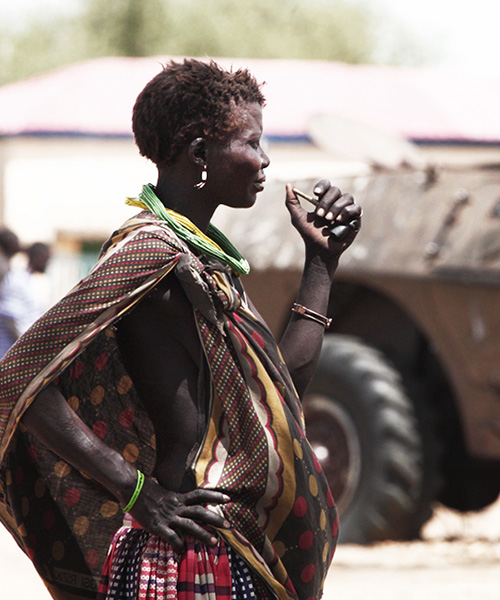
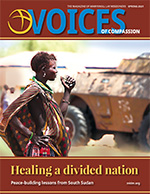

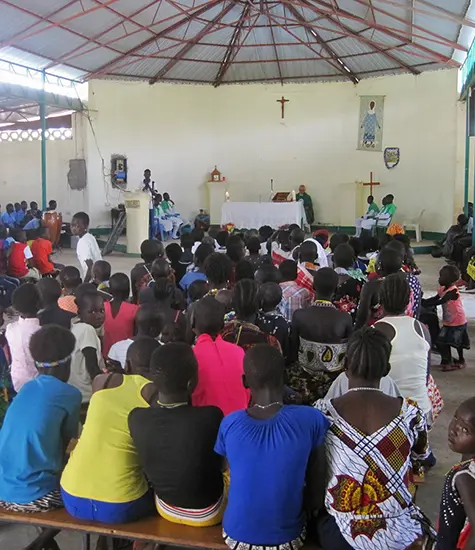
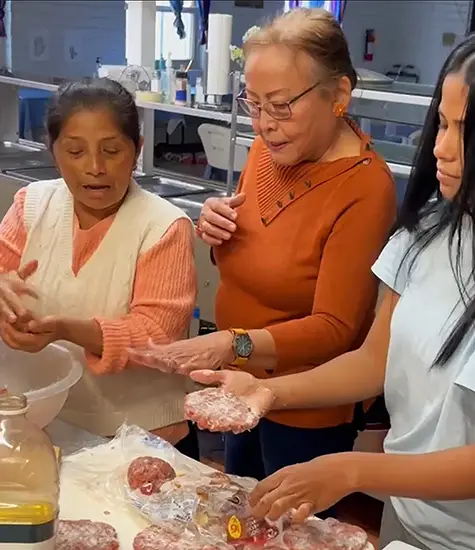
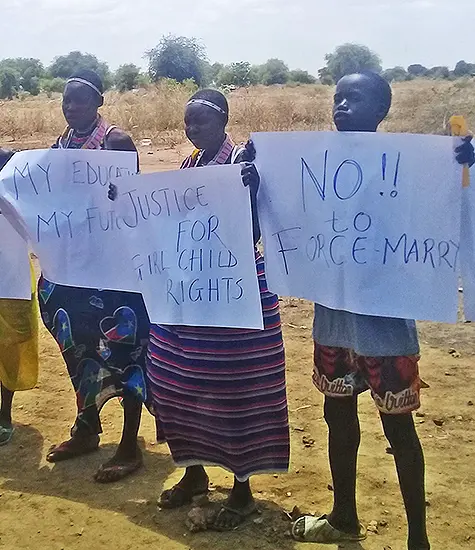




Thank you Vicki for writing the experiences of other MKLMs who dedicated so much service to the people of South Sudan. I read that there are many opportunities to improve and sustain the lives of those who struggle daily in this area. I am still on course for MKLM and potentially to serve also in South Sudan. Francis Wayne